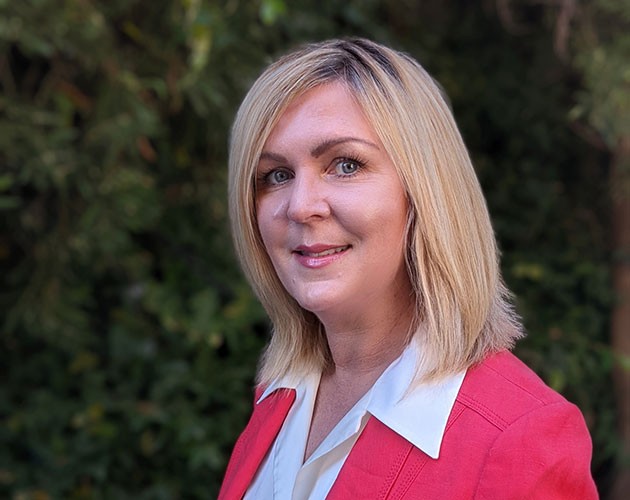Technical Engineer Finds Sweet Spot in Product Management

Today, instructor Ray Ranga brings a seasoned expertise to his popular course, Introduction to High-Tech Product Management and Marketing. However, his path from a strictly technical engineer role to a cybersecurity product manager shows that he never shies away from a new challenge—or risk. Now, he helps his students do the same.
“I had worked as an engineer at Cisco Systems for many years, but became curious about the other parts of the product lifecycle,” Ray recalls. “I wanted to know more about how the company decides what to build and what not to. I wanted to know more about who needed our products. I hoped that a non-engineering role would give me a broader perspective, and I realized that the skills that I had gathered over the years—which were purely technical—were transferable.”

Understanding the needs of the market also required technical knowledge of the product. This was his “a ha” moment. By leveraging his long-held technical skills, Ray could easily make the transition from the engineering world into full-fledged product management.
Throughout his 11-year tenure at Cisco, Ray took on new roles as technical marketing engineer and product manager. After leaving that company, he took up startup roles that allowed him to dive into sales and truly own the customer relationship. He says, “This gave me a great perspective about the end-to-end lifecycle of a product.”
By 2012, when he made his next leap to IntelePeer, a Cloud-based business communications company, Ray was deeply rooted in product management.
“At IntelePeer, I was brought on to build a product, but the challenge was that we had little in-house technical and market experience,” Ray recalls. “Again, I had to play a big role outside product management: helping the sales team sell, helping the engineers build and shaping the company to excel. Success in product management assumes a keen knowledge of adjacent roles such as sales, marketing and customer relationship management.”
Motivated by his dynamic experiences at IntelePeer, Ray next got involved with startup Vidcie in 2014, where he became the Director of Product Management and head of product for the entire company.
"Success in product management assumes a keen knowledge of adjacent roles such as sales, marketing and customer relationship management.”
All of these experiences culminated in a mastery of the field that helped him land his current position: Head of Advanced Analytics Product Management at Exabeam, a B2B company that offers a cybersecurity platform.
Oh, and did I forget to mention that Ray had no previous experience in cybersecurity? “I’m happy to admit it!” Ray says with a laugh.
But during his interview with the co-founder of Exabeam, Ray advocated for himself. “I said, ‘Product management is product management, regardless of the product, regardless of the market,” Ray says.
The co-founder agreed.
ONE TITLE, MANY HATS
In his day-to-day responsibilities, Ray oversees everything from product development to customer acquisition and retention.
“I provide my insights and inputs on what we need to build next and why,” he explains. “A lot of this is about prioritizing resources within the company to meet the demands and needs of our customer base. After that, it’s a lot of iterative processes: make sure we get feedback, do things right, measure specific metrics to try to improve.”
In fact, being a newbie to cybersecurity has turned out to be one of Ray’s advantages.
“I see cybersecurity from a different lens because I’m still so new to it. There are so many different kinds of products and different vendors that it can be virtually impossible for companies to keep up with attacks. But there are some foundational pieces of technology that you can put in place to stay ahead of hackers. This is where more sophisticated subjects like data science, machine learning, artificial intelligence and supervised learning come into play.”
So where does Exabeam fit into this equation?
“At Exabeam, we use this technology to create a baseline for user behavior that can then be monitored for potentially malicious anomalies. Once spotted, they are flagged for further investigation. Ultimately a product like Exabeam’s User & Entity Behavior Analytics is going to be an absolute necessity to sift through all the noise and provide clear and actionable insights on what attack is happening and how to stop it.”
EDUCATING HIS CLIENTS
These new innovations are elevating the field. But as the industry has grown in complexity and reliance on high-tech solutions, the number of in-company, experienced cybersecurity analysts hasn’t risen in proportion. “From an educational aspect, there are few masters programs in cybersecurity and the certifications that exist are expensive and hard to find.”
To address this pain point, Exabeam relies on great UX design: “Our product is so easily consumable that you don’t really need a lot of expertise in your human resources,” Ray explains. “We’re making the product so easily click-friendly and graphical. There’s a lot of work-flow and journey considered in the product. Any person with minimal training can come in, open the product and run the cybersecurity operations for their organization.”
But of course, it’s not enough to simply produce a great product. Ray explains the other critical component (and a topic he covers extensively in his course) excellent product marketing that ensures the product gets in front of the right audience.
“That’s where this whole concept of lead generation and demand generation come into play,” he says. “You need to be able to do your marketing campaigns so that you are tapping into prospects that have the problems that your product is intended to solve. This boils down to conducting competitive analyses, positioning and messaging based on data, and enabling your sales teams.”
"Excellent product marketing ensures the product gets in front of the right audience."
TRANSLATING HIS EXPERIENCE TO HIS STUDENTS
At this point in his career, Ray navigates his many product management responsibilities with an experienced finesse. But for people who are new to this role, there can be a large learning curve.
“Product management and product marketing management look fancy from the outside,” Ray says. “But what people who are new to the field don’t always know is how extensive the responsibilities are and how high-stress the role is. You can make or break the product. Sometimes, especially in a startup, you can make or break the company. You need to think like an engineer, talk like a salesperson. You need to know some fundamentals about finance, marketing and customer support.
“You need to have an understanding of your channel partners. You need to have a customer mindset, know what customers want, how they think and how they operate. You need to know who your competitors are. You need to know the landscape of the market that you’re selling into. This gets very complicated very quickly.”
Ray believes that a successful product manager has to have his or her hand on the pulse of the entire product lifecycle. But this is no easy feat.
"You need to think like an engineer, talk like a salesperson. You need to know some fundamentals about finance, marketing and customer support."
In Introduction to High-Tech Product Management and Marketing, students get an in-depth look at everything from how to define a product and articulate a business case to how to build a market-driven product to eventually defining a go-to-market strategy and the programs required to take that product successfully to market.
“I want to transfer my skills and my knowledge to aspiring product managers and product marketing managers, aspiring founders, and sales and other functional folks wanting to learn how to do their jobs better,” he explains. “This class is for anyone who wants to know how to successfully take a product to market.”
In talking to Ray, one thing that becomes immediately clear is how dedicated he is to teaching and empowering his students. He explains why he teaches at UC Berkeley Extension:
“I got quite lucky in my career to have great mentors, but I know how rare that is. I’m teaching because people like myself are looking for a change, and I want to share my experiences to help them.”
Between case studies, discussions and group projects, Ray’s course also features guest speakers who bring impressive industry experience into the classroom.
“Each class I invite a CEO or maybe a Director or Senior Director to talk with students. In a recent section, I invited a C-level executive who is very accomplished and well known in the industry as the product marketing guest speaker. He talked to the class about how to tell effective stories, specifically, how important it is to empathize with the prospective customer. This really cemented a lesson I had covered in my lectures.”
Always thinking about how to empower students who are considering career transitions, Ray also brings in guests who can give some career advice.
“Last semester, I invited one of the students I taught in my first semester at Extension. She’s now a product marketing professional. I invited her to share her experience on making this transition. The class gave her rave reviews. So I think that really resonates a lot with students, because here’s someone who just went through what they want to go through themselves.”
The rave reviews aren’t reserved only for Ray’s impressive guest speakers. One glance at the endorsements on his LinkedIn profile reveals dozens of former students who have valued his teaching.
"This class empowered me tremendously and I could take what I had learned in class and immediately apply it at work.”
One former student shared, “Ray is a fantastic mentor...Through this course I was able to understand what to expect in the real world as a Product Manager and prepare myself better for it.” Another stated, “Being a young professional who is relatively new to Product Marketing, this class empowered me tremendously and I could take what I had learned in class and immediately apply it at work.”
But Ray isn’t one to settle. He is always working to create an even better class experience for his students—such as looking for new products hitting the market to enhance his curriculum. “For example, I added a case study last semester comparing the Walmart service that lets them deliver groceries to your refrigerator and the Amazon Key.”
What is Ray’s next big project?
“Many of my students have asked me to teach a new course—I’m excited to announce that I’m going to be offering a new course on pricing in 2018. Pricing is often the most challenging part of building a product. Price it too low, you lose profits. Price it too high, you might not sell as much. This course will cover topics about all the factors that go into pricing decisions and the different techniques to price a product for various market conditions.”
Knowing Ray, you won’t want to miss it.


